Evolutionary Ecology
The department of Evolutionary Ecology gathers complementary skills in behavioural ecology, population dynamics, population biology, community ecology, and methodology (statistics and modelling). The research done in the department aims at studying how animal species evolve in a changing world by understanding the causes of the evolution of traits, adaptations and interactions. For that, we consider different levels of organization from individuals to populations and communities. Because organisms cannot be considered isolated from other biotic factors, we consider pathogens but also competing species within communities.
We study how individuals adapt to their environments that are largely impacted by anthropic pressures, and how life history traits and behaviour evolve in response to these pressures. Although we mainly focus on phenotype, we more and more consider the mechanistic link between the genotype and the phenotype. We develop the theoretical framework of our discipline through a conceptual and modeling approach. In parallel, we test hypotheses that arise from theoretical predictions through experimental, comparative and observational approaches on different biological models (insects, birds, mammals). Experimental approaches are developed in the laboratory (insect model) and in natura (bird, insect and mammal models). Observational and comparative research is mainly concerned with vertebrates. Our approaches are also, and increasingly, interested in the mechanisms of adaptive responses. In addition to the classical approaches of demographic analysis and trait change, methods of ecophysiology, chemical ecology and molecular biology are used.
Our department hosts several long-term studies of wild populations of different species. These long-term studies offer a valuable way to understand how biotic and abiotic factors affect individuals’ life history traits, and the functioning of populations in natura. Five populations of mammalian species are thus monitored for several years (more than 40 years on roe deer, 30 on Alpine marmots, 25 years on cats, 16 years on zebras, and 20 years on impala). Two of our study sites (La Sassière in Vanoise National Park (Alpine marmots) and Hwange National Park) have been certified as “Site d’Etude en Ecologie Globale” (SEEG), and two (ZA “Hwange” and ZA “Antarctic and sub-Antarctic”) were certified as “Zone Atelier” by the CNRS.
The department of Evolutionary ecology is also largely involved in training activities. Lastly, we also have strong socio-economic relationships. Indeed, because we address questions of major societal interest (global warming, public health) we tightly collaborate with socio-economic partners (Office Français de la Biodiversité, Vanoise National Park, Hwange National Park in Zimbabwe, Office National des Forêts, etc.) and participate to general public and media events.
Publications
Display of 1501 to 1530 publications on 2459 in total
Disparity Changes in 370 Ma Devonian Fossils: The Signature of Ecological Dynamics?
PLoS ONE . 7 ( 4 )
Journal article
see the publicationModularity as a source of new morphological variation in the mandible of hybrid mice
BMC Evolutionary Biology . 12 ( 141 ) : 16
Journal article
see the publicationMorphometric and genetic structure of the edible dormouse (Glis glis): a consequence of forest fragmentation in Turkey
Biological Journal of the Linnean Society . 107 ( 3 ) : 611--623
Journal article
see the publicationA Unifying Model for the Analysis of Phenotypic, Genetic, and Geographic Data
Systematic Biology . 61 ( 6 ) : 897--911
Journal article
see the publicationLong-term effects of yolk androgens on phenotype and parental feeding behavior in a wild passerine
Behavioral Ecology and Sociobiology . 66 : 1201--1211
Journal article
see the publicationAssessing species and community functional responses to environmental gradients: which multivariate methods?
Journal of Vegetation Science . 23 : 805--821
Journal article
see the publicationDisentangling plant trait responses to livestock grazing from spatio-temporal variation: the partial RLQ approach
Journal of Vegetation Science . 23 : 98-113
Journal article
see the publicationPredator-prey spatial game as a tool to understand the effects of protected areas on harvester-wildlife interactions
Ecological Applications . 22 : 648-657
DOI: 10.1890/11-0422.1
Journal article
see the publicationAssessing the effects of spatial contingency and environmental filtering on metacommunity phylogenetics
Ecology . 93 : S14-S30
DOI: 10.1890/11-0494.1
Journal article
see the publicationImproved testing of species traits-environment relationships in the fourth-corner problem
Ecology . 93 : 1525--1526
DOI: 10.1890/12-0126.1
Journal article
see the publicationMise au point d'un modèle de diagnostic des interactions entre structures paysagères, infrastructures de transports terrestres et espèces emblématiques : le cas du Lynx dans le massif jurassien
: 123
Report
see the publicationResponse: rarity trophy hunting and ungulates
Animal Conservation . 15 ( 1 ) : 16-17
Journal article
see the publicationRarity trophy hunting and ungulates
Animal Conservation . 15 : 4-11
Journal article
see the publicationEffects of spatial scale and sample size in GPS-based species distribution models: are the best models trivial for red deer management?
European Journal of Wildlife Research . 58 : 195--203
Journal article
see the publicationQuantitative estimation of the viability of Toxoplasma gondii oocysts in soil.
Applied and Environmental Microbiology . 78 ( 15 ) : 5127-32
DOI: 10.1128/AEM.00246-12
Journal article
see the publicationThe Life Cycle of Toxoplasma gondii in the Natural Environment
Toxoplasmosis - Recent Advances . 978-953-51-0746-0 : 3-36
DOI: 10.5772/48233
Book chapter
see the publicationModelling the dynamics of host-parasite interactions: basic principles
New Frontiers of Molecular Epidemiology of Infectious Diseases . 978-94-007-2113-5 : 79-101
Book chapter
see the publicationDistinct evolutionary strategies of human leucocyte antigen loci in pathogen-rich environments
Philosophical Transactions of the Royal Society B: Biological Sciences . 367 : 830--9
Journal article
see the publicationAbility of European parasitoids (Hymenoptera) to control a new invasive Asiatic pest, Drosophila suzukii
Biological Control . 63 ( 1 ) : 40 - 47
Journal article
see the publicationSpatial heterogeneity in mortality and its impact on the population dynamics of Eurasian woodcocks
Population Ecology . 54 ( 2 ) : 305-312
Journal article
see the publicationSpatial processes driving soil microbial community assembly on a wide scale
4. International Congress Eurosoil 2012 - Soil Science for the Benefit of Mankind and Environment .
Conference paper
see the publicationVariability among tobacco cyst nematode subspecies and consequences on their sustainable management with host resistances
Journal of Nematology . 44 (4) : np
Conference paper
see the publicationVitellogenin-like protein measurement in caged Gammarus fossarum males as a biomarker of endocrine disruptor exposure: Inconclusive experience
Aquatic Toxicology . 122 : 9-18
Journal article
see the publicationComparison of bioassays with different exposure time patterns: The added value of dynamic modelling in predictive ecotoxicology
Ecotoxicology and Environmental Safety . 75 : 80-86
Journal article
see the publicationSurvival data analyses in ecotoxicology: critical effect concentrations, methods and models. What should we use?
Ecotoxicology . 21 : 1072--1083
Journal article
see the publicationA handbook for uncovering the complete energetic budget in insects: the van Handel's method (1985) revisited
Physiological Entomology . 37 ( 3 ) : 295-302
Journal article
see the publicationFitting a lognormal distribution to enumeration and absence/presence data
International Journal of Food Microbiology . 155 ( 3 ) : 146 - 152
Journal article
see the publicationModeling of Clostridium perfringens vegetative cell inactivation in beef-in-sauce products: A meta-analysis using mixed linear models
International Journal of Food Microbiology . 154 : 44-51
Journal article
see the publicationPaternity and Dominance Loss in Male Breeders: The Cost of Helpers in a Cooperatively Breeding Mammal
PLoS ONE . 7 : 1-6
Journal article
see the publicationMaking use of harvest information to examine alternative management scenarios : a body weight-structured model for wild boar
Journal of Applied Ecology . 49 : 833--841
Journal article
see the publication
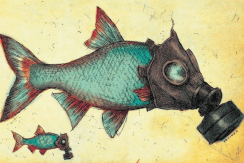
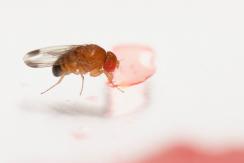
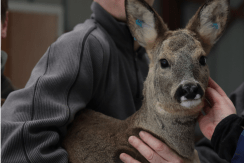
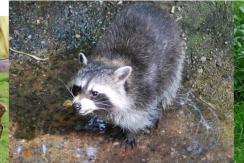
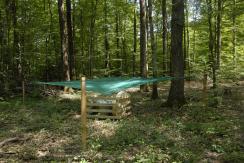
You also, comment on this article